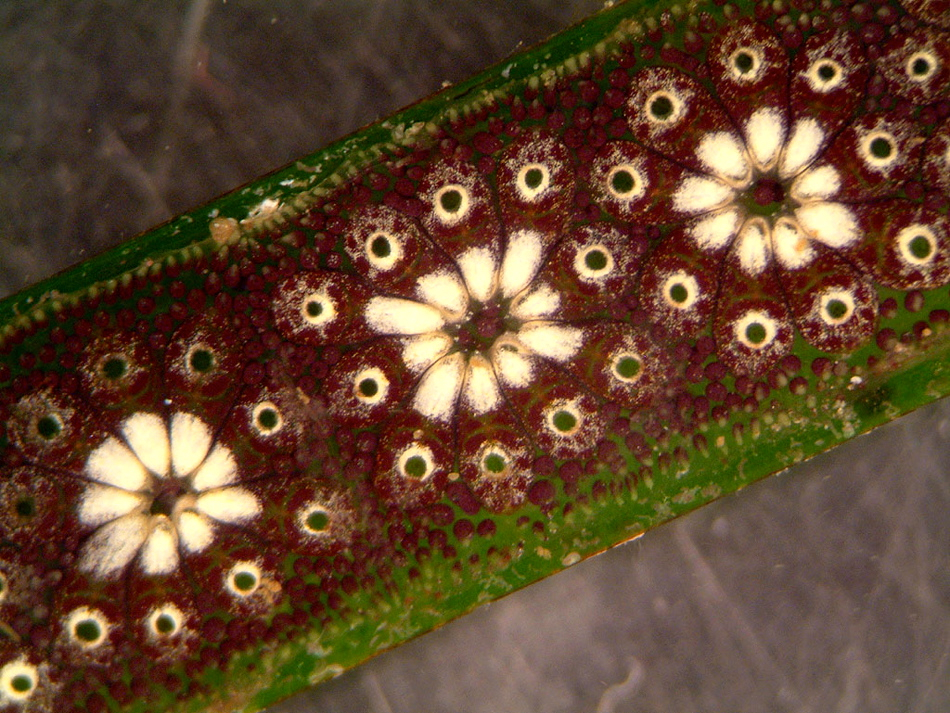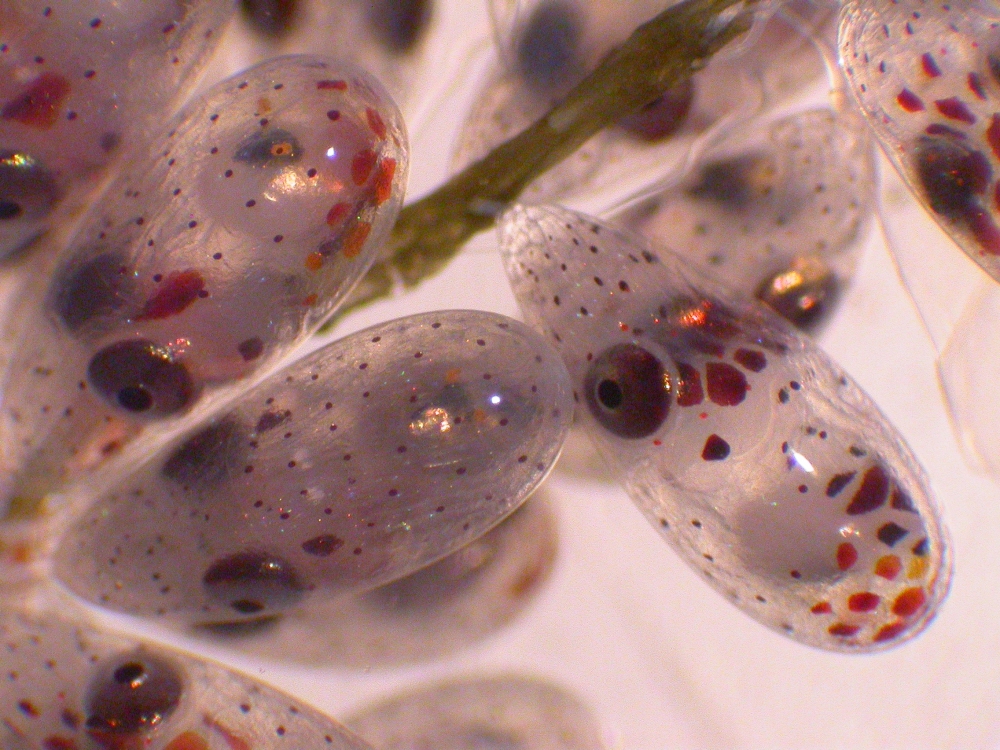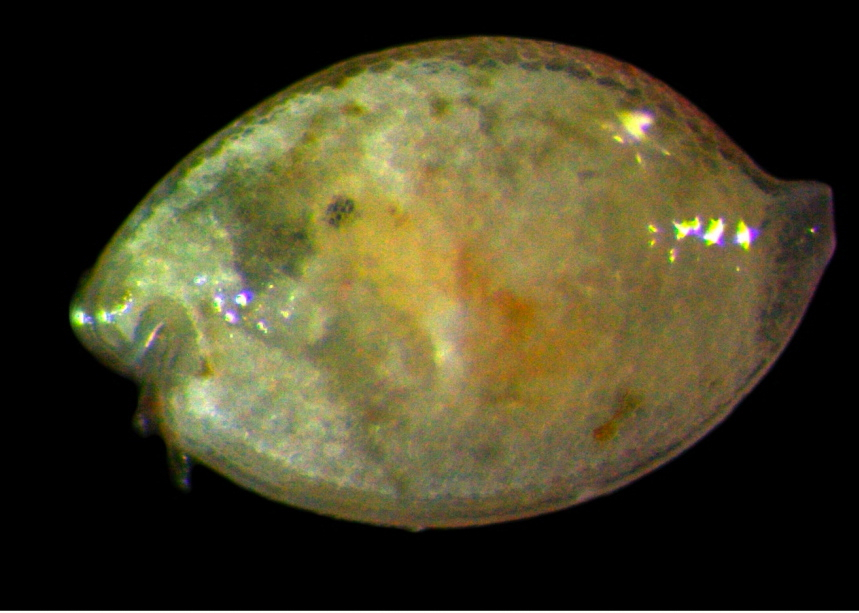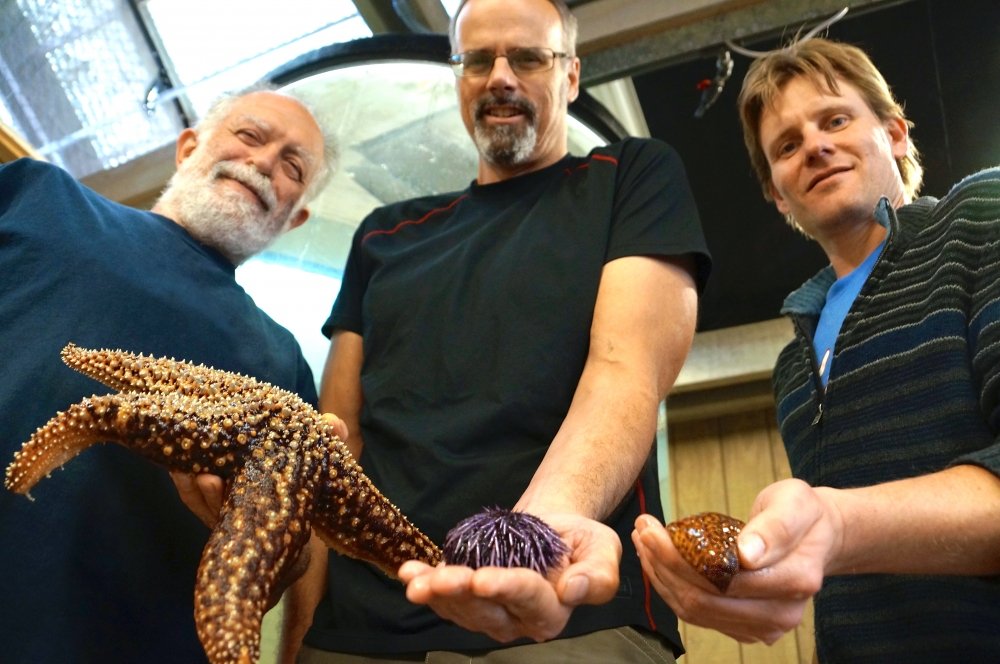Researchers to Sequence the Genomes of Certain Invertebrates
Invertebrates make up more than 70 percent of the approximately 1.9 million described species on Earth. These creatures have long served as model organisms in many areas of biology.
Sea urchins, for example, are used in developmental/cancer cell biology, mollusks for neurobiology research, fruit flies to study genetics and nematode worms to illuminate cell line maturation, development and genetics. Researchers using all of these have received Nobel Prizes.
Yet hordes of other lesser-known invertebrates are being studied by researchers worldwide. UC Santa Barbara has a number of investigators examining the unique properties of these unsung invertebrate models.
Todd Oakley, a professor in the Department of Ecology, Evolution and Marine Biology, is an ostracod expert. Sometimes called seed shrimp, ostracods are a family of tiny crustaceans consisting of some 13,000 living species. Zoologist Armand Kuris works with marine parasites, including those found in snails, octopus and crabs. Anthony De Tomaso, an associate professor in the Department of Molecular, Cellular and Developmental Biology, studies tunicates, in particular Botryllus schlosseri, a type of sea squirt known for its ability to fuse and to regenerate.
Oakley represents UCSB in a newly formed organization called the Global Invertebrate Genomics Alliance (GIGA). The organization aims to sequence the DNA of up to 7,000 non-insect/non-nematode invertebrates in order to promote comparative genomics and bioinformatics research. Invertebrates comprise some of the earliest and largest branches of the tree of life, dating back more than 550 million years. Many of these ancient animal groups are unique to marine and aquatic habitats and ecosystems.
“UCSB is a great place for leveraging genomics on invertebrate animals since it’s right on the ocean and has good marine resources with seawater going to many different buildings, as well as a culture of understanding and studying marine biology and marine animals,” said Oakley, a GIGA member. “To really understand the connections between model organisms and humans and other animals, we need to flesh out the whole phylogenic tree to understand the similarities and differences among these genomes. There are biological products made by many invertebrates, such as anti-cancer agents, where having their genome can really help us to understand those animals and to study their biology in greater detail.”
In addition to sequencing ostracod transcriptomes — a subset of the whole genome that revels the suite of genes turned on at one particular time in an animal — Oakley is also working with Kuris to sequence the DNA of medically important parasitic trematodes (worms) in sea snails. “There is probably more social organization in trematodes than there is in termites,” Kuris said. “There is clearly communication among these parasites in their regulatory processes, and to elucidate this requires molecular genetic investigations.”
One of several people studying tunicates at UC Santa Barbara, De Tomaso is focused on the phenomenon of self/non-self recognition (allorecognition) in the primitive chordate organism Botryllus. This allorecognition reaction not only links a number of disparate fields, including immunology, stem cell, developmental and evolutionary biology, but also has ecological consequences.
“What we’re getting from the genomics is a large-scale view of what’s going on that allows us to refocus our efforts on what’s important,” De Tomaso said. “The genomic part is huge and it’s changed everything from where we were two years ago.”
“Now we want to understand pathways,” he continued. “But pathways are only really worked out in flies and mice and maybe sea urchins. Yet we can map our gene expression onto pathways derived from these other organisms and see what is changing at a systems level. If we get an idea of what’s conserved among these different models, it tells us where to look.”
According to GIGA’s website, describing the wide functional and structural diversity of invertebrates requires an integrated approach that includes not only traditional biological sciences but also the burgeoning interdisciplinary efforts of genomics. Through a collaborative network, the organization intends to address the major problems associated with the genomic sequencing of a large taxonomic spectrum.
GIGA also aims to establish standards and policies that will facilitate comparative approaches to invertebrate genomics. Further steps toward these goals will be discussed at the GIGA symposium at the June meeting of the Society for Molecular Biology and Evolution in Puerto Rico.
“The GIGA initiative gets people communicating so somebody else isn’t going to repeat what I am doing,” Oakley said. “This is the big reason for the organization, to have a forum for people to be able to communicate and list all the different projects that they have going.”







